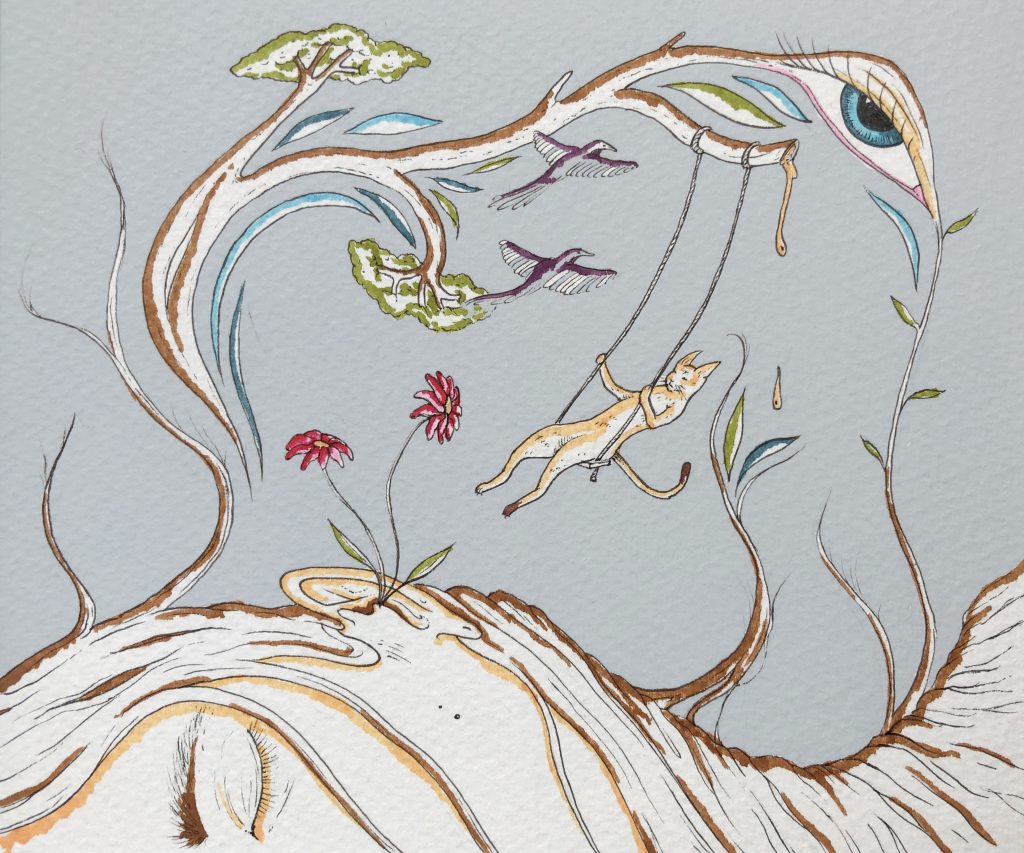
There are many ways that engaging in the arts, creativity and culture more widely can enable young people to open up their imaginations and explore ideas for future change to benefit people, places and planet. For example, this research study showed that when children wrote stories about environmental issues, they were more likely to think about solutions to root causes.
Imagination activism
An Imagination Activist is someone who wants to make change, powered by the imagination, and the vision and creative tools to communicate it to others. The term is proposed by Phoebe Tickell and supported by social change designers such as Cassie Robinson. But it’s not a new phenomenon. Imagination is a distinctive human capacity, and working for justice or progress is as old as civilisation, or even older.
There are several small initiatives connecting arts, imagination and nature connection, working in multiple outdoor and indoor sites in their local areas, including: Cambridge Curiosity and Imagination; House of Imagination and their Forest of Imagination, in Bath; The House of Fairy Tales, and their project The Great Imagining; and the Institute of Imagination in London.
Another growing area of exploration is Futures Literacy. See, for example, Future Narratives, an Erasmus-funded project for young people.
We are also inspired by this learning resource that travels into the future, Beyond the Fossil Era, and includes creating a Fossil Museum.
Media literacy
If we look at the media, advertising and popular culture with a critical and ecological lens, we start to see ‘Everyday Ecocide’ everywhere. Our contemporary ways of life have separated us from our environment – or life itself. Dominant colonial-consumer culture is constructed by discourses that reinforce ‘Everyday Ecocide’. Young people need help to see how these discourses work to make nature and Earth systems worthless or invisible, as well as the external impacts of our activities. We can help them voice new stories and change the media and culture to reflect a more ecocentric view.
See our Everyday Ecocide collecting project.
Using arts to develop eco-capacities
Young people have little voice in education, and their future needs in the Earth crisis do not drive the curriculum. Once we can see the range of ways in which people are separated from nature, we can build a curriculum or learning programmes for reconnection. Learning is not about filling people with knowledge but creating opportunities for them to develop capacities. Eco-capacities are foundational for the learning that people need in an Earth crisis, and should be at the roots of every subject or skill-set.
This framework for Eco-capacities is an alternative to Eco-literacy, embracing physical, emotional and spiritual not just mental aspects of learning. Cultural and creative learning offers, as well as outdoor learning, are crucial to the development of these capacities.
Creative learning for justice
Justice and inclusion should be at the heart of activism, and there are many ways that arts and culture can enrich learning for justice.
The Climate Outreach report (Communicating climate justice with young adults in Europe, November 2022) shows that young people need their learning to connect past histories of colonialism with current environmental issues, and to be offered more positive and ethical framings of Climate Justice. The report suggests: Exploring unjust systems rather than blaming high-consuming countries or people; Exposing bad behaviours and poorly-designed systems, rather than bad people and assuming that systems are forever entrenched; Not treating climate change as a separate technical challenge, but exploring the links between social and environmental justice; Exploring the intersectional ways that climate impacts are unjust, rather than describing impacts on some groups of people without explaining why.
Creating a manifesto is a relatively familiar project with young people. For example, see the BERA youth-created manifesto for climate and sustainability education. But, perhaps a manifesto is more effective if it is developed and presented with creative methods. See for example the zine created by young people with artist Lu Edwards to present the Manifesto for Essex created by young people about the climate emergency.
Our teaching resource for KS3 Geography, produced for A New Direction, explores many links between colonialism and climate change, with a focus on the Caribbean and Nigeria.
See our Stories of Extraction enquiry that explored links between extractivism and injustice in cultural work.
The Power Pack on the Climate Emergency is a great learning resource from the Serpentine Galleries